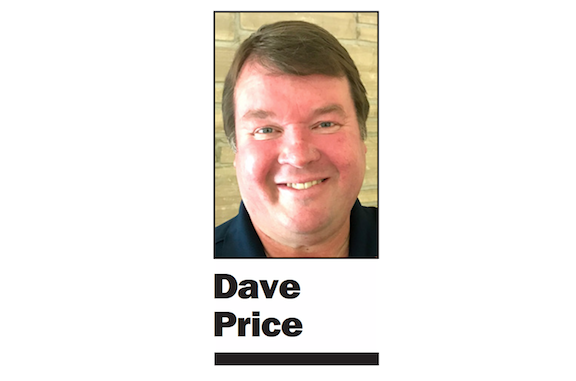
OPINION
BY DAVE PRICE
Daily Post Editor
The city of Palo Alto paid $1.5 million in 2018 to install a system of cameras and sensors to determine if people were about to jump onto the Caltrain tracks and kill themselves.
The history, as most of you know, goes like this. We had a series of youth suicides on the tracks between 2009 and 2015. Parents and other adults decided to go to the city’s rail crossings and sit there in lawn chairs for hours to prevent more deaths. Then City Manager Jim Keene decided to replace the track watchers with employees from a private security company. But that didn’t work out too well when these employees began burglarizing houses near the crossings. So the city took a tech approach, believing electronics would detect if somebody was near the tracks, and trains could be slowed and cops could be dispatched to the person’s location.
On Aug. 2, a 23-year-old Stanford student took his life on the tracks somewhere between the Alma Street crossing and the University Avenue train station.
Why didn’t the $1.5 million camera system prevent this tragedy?
Can anything be done to prevent this from happening again?
Is the city even looking into that?
We’re asking but we’re getting stonewalled on this.
City spokeswoman Megan Horrigan Taylor said in an email: “Your inquiry implies there was something wrong with the system. The system is not designed to prevent trespassing on 100% of the Caltrain right of way.”
When an airliner crashes, we don’t say that there was nothing wrong. The National Transportation Safety Board brings in experts to determine the cause. If the cause is mechanical, every similar plane is repaired so the same thing doesn’t happen again. If the pilots followed the wrong procedures, the procedures are changed.
We’re a society that tries to prevent tragedies, not brush them under the rug.
Instead of defending the $1.5 million system, the city needs to be more open-minded and see what improvements can be made.
Maybe we need longer-range cameras and sensors? Or more cameras and censors?
I don’t know because I’m not an expert. But I do know this: When it comes to safety, we should always push for improvements. The city’s attitude of burying its head in the sand is unacceptable.
All of us should be concerned about this. The next person to die there might be a friend or loved one.
Editor Dave Price’s column appears on Mondays. His email address is [email protected].

We give government these tasks that can’t be done – monitoring people all the time everywhere is an impossible task – and then think it’s just a matter of more resources. A compassionate society can help and support those in despair but it cannot prevent suicide by watching everyone all the time. Life in the BA can be stressful and competitive. So-called social media can be very hard on too many young people – FB is too often predatory and too often isolates – and what was once fairly reliable guides to identity are sorely distorted by people who push race and gender nonsense. Those who push this stuff cause a lot of damage. Reversing that should be the target, not more cameras and monitors and definitely not expecting government to fix our broken society.
Apologies to those — who like me — think the following comment is (or should be) plainly obvious to anyone who gives the subject a moment’s thought.
Like costly human guards, camera systems — such as used on almost all the world’s subway systems or at selected locations on the Caltrain line — are generally useless in stopping a person without obvious outward signs of suicidal intent from suddenly, unpredictability stepping from a public crossing or station platform into the path of an oncoming train mere seconds before impact.
As with human watchers, camera systems only have a chance of preventing a suicide when a person is exhibiting obvious outward signs of unusual behavior (including trespassing) suggesting possible suicidal intent long enough before an oncoming train’s arrival (e.g. several minutes, not seconds!) for meaningful interventions to occur, such as warning more distant oncoming trains to approach the area slowly and prepared to stop.
People often have the need to explain away or find the scapegoat in these tragedies so they can feel ok with themselves and feel like they aren’t at risk. Let’s look at the facts:
1). Every adult human being has the right to live their lives and end their lives the way they see fit, that’s just their right.
2). No amount of technology and/or security guards would prevent this from happening. If someone has decided to commit suicide they will find a way to get it done
3). Statistically most people committing suicide suffered from some form of mental condition, such as depression, anxiety or similar. It is a health issue and a very tragic one but no one can force the other person to get treatment unless they are willing to do so. Again, it’s a human rights matter.
Do we want to be the kind of society that tells individuals how to live their lives? Or do we want to respect individual freedoms? Can anything be done to prevent suicides? Physical barriers such as eliminate human access to tracks maybe but then people will find another way.
So, let’s just be realistic, compassionate and kind to each other. Let’s acknowledge how scary and tragic suicides are, how depressing it is when it happens within our own community and how we wish there were a way to prevent them all. At the same time, let’s admit that we will probably never be able to prevent it completely. Let’s stop trying to find someone to blame either. We may frantically try to blame the city, the technology, the guards, the families, etc. Fundamentally it is that person’s right to end their life, and we just have to respect that.